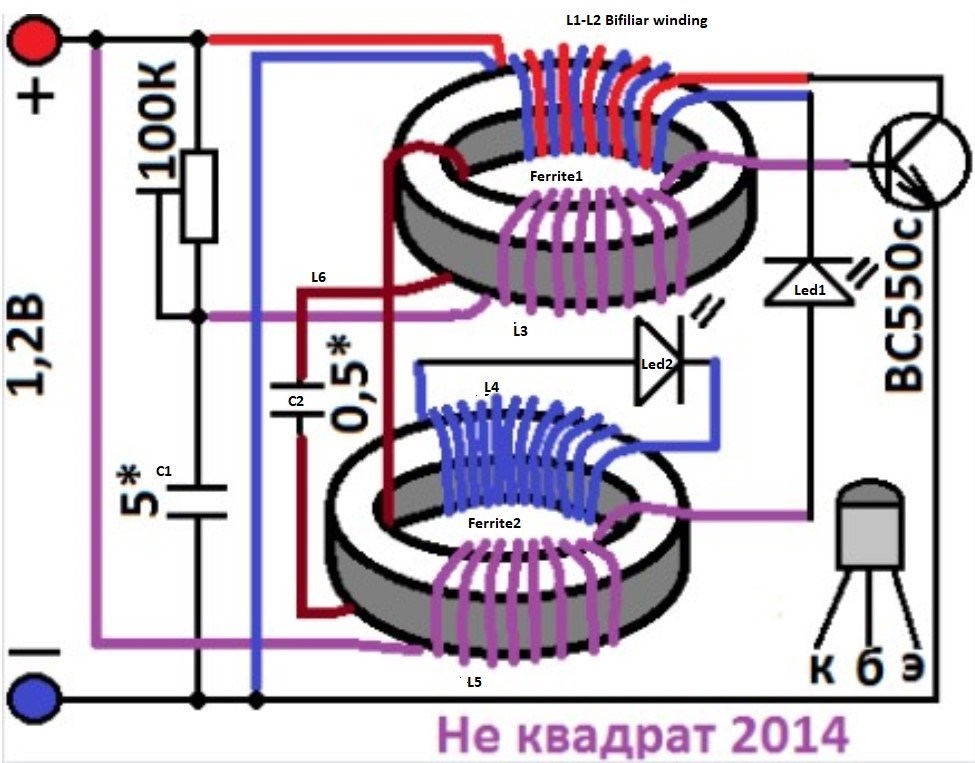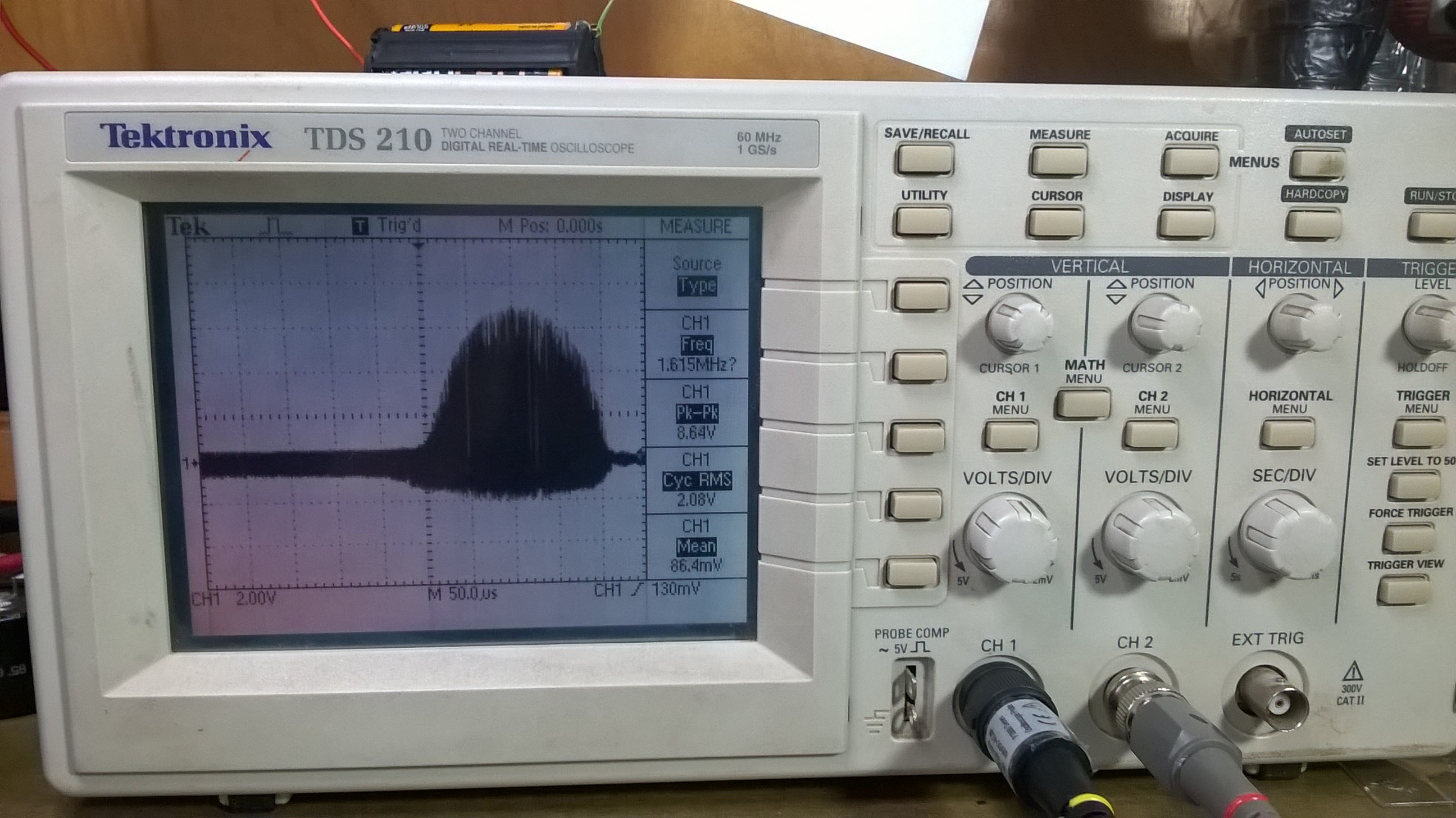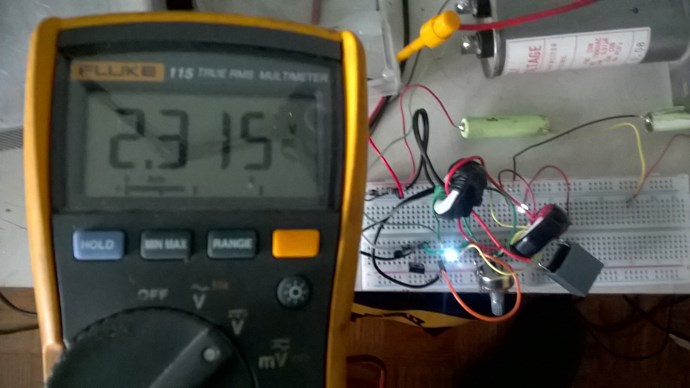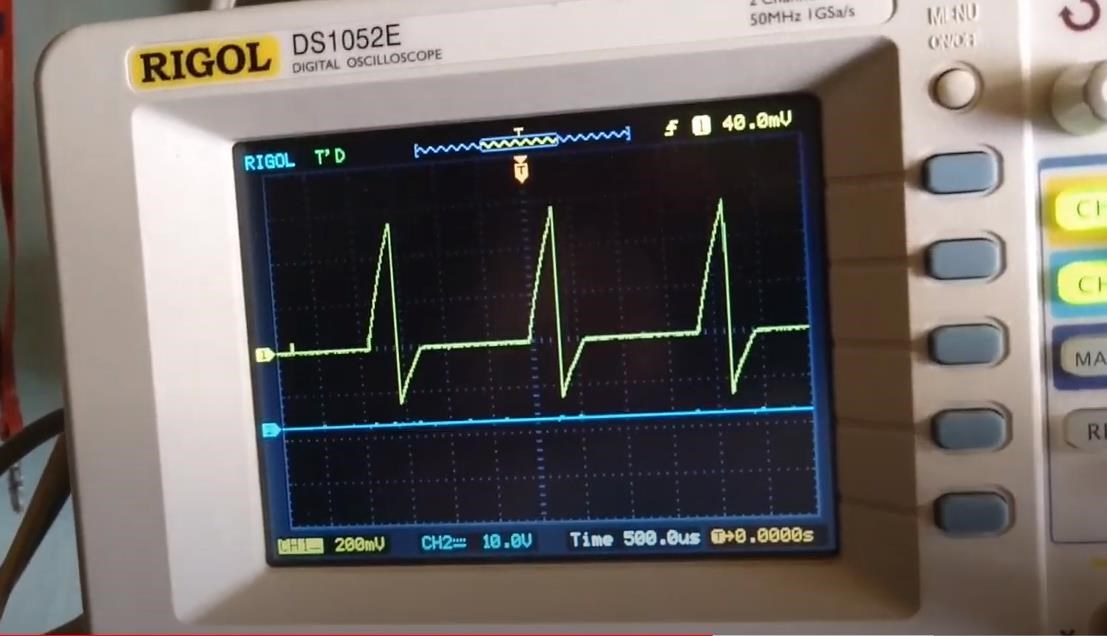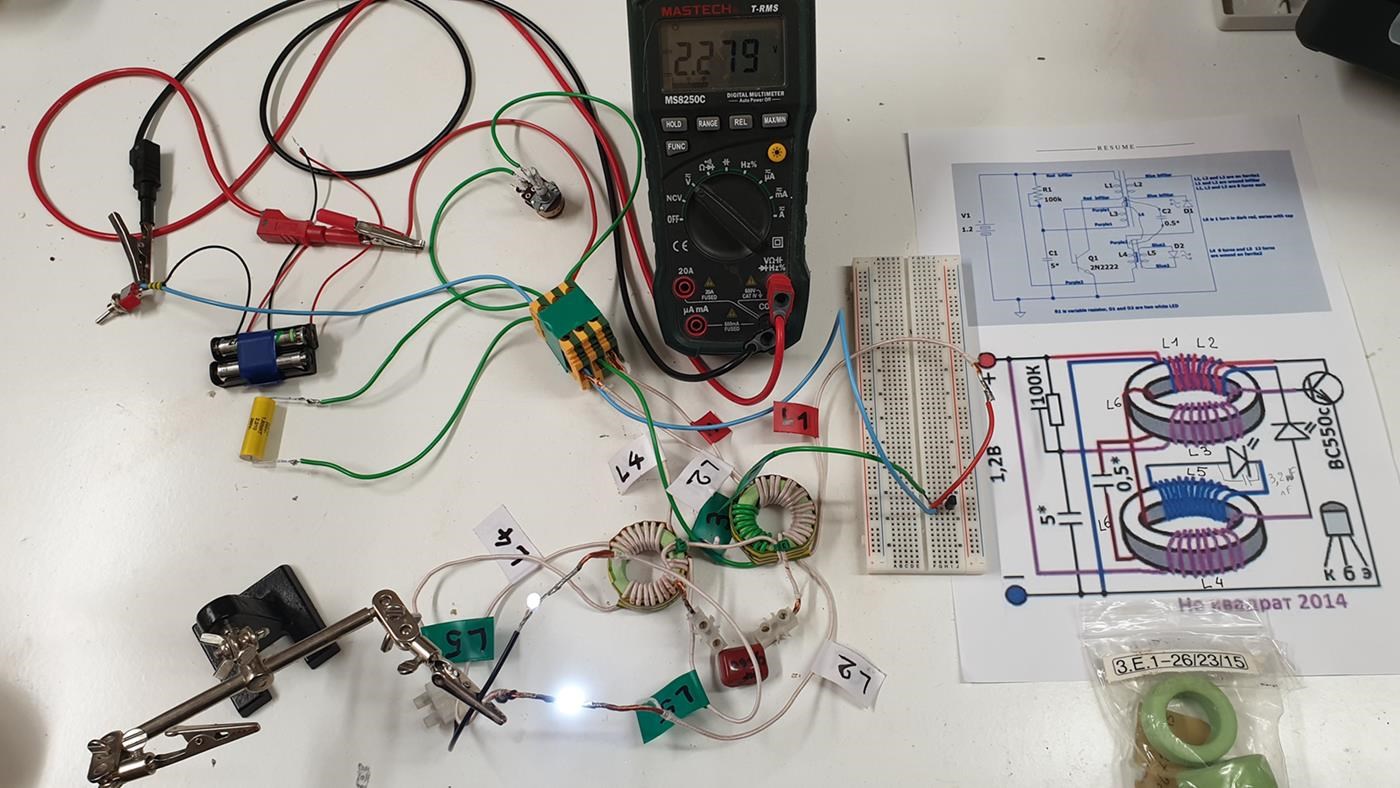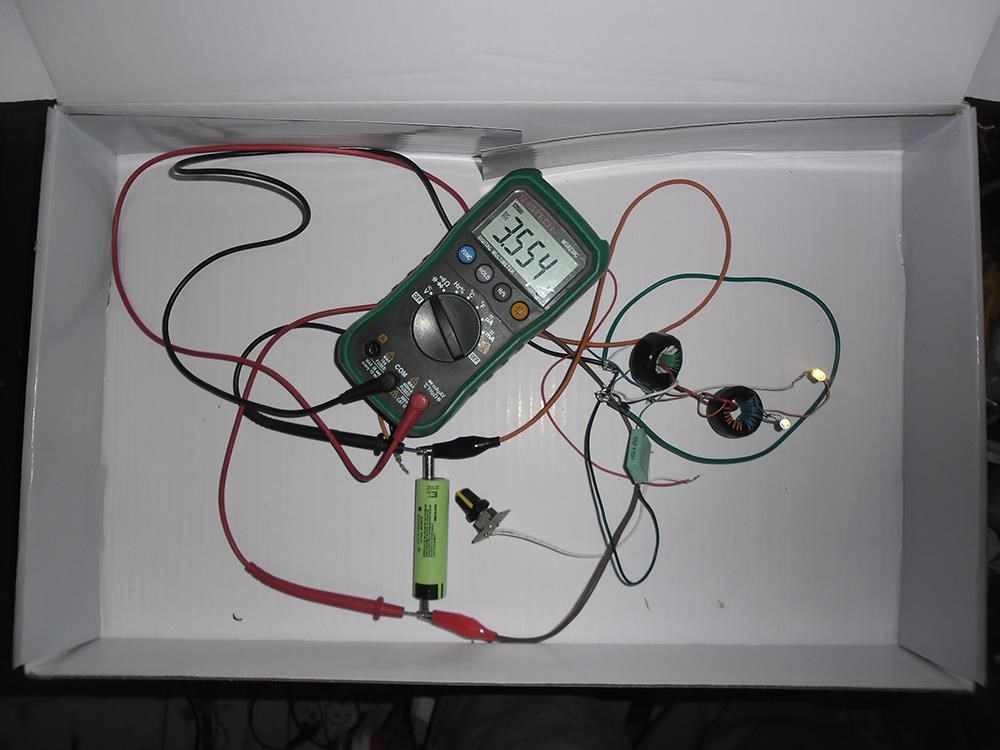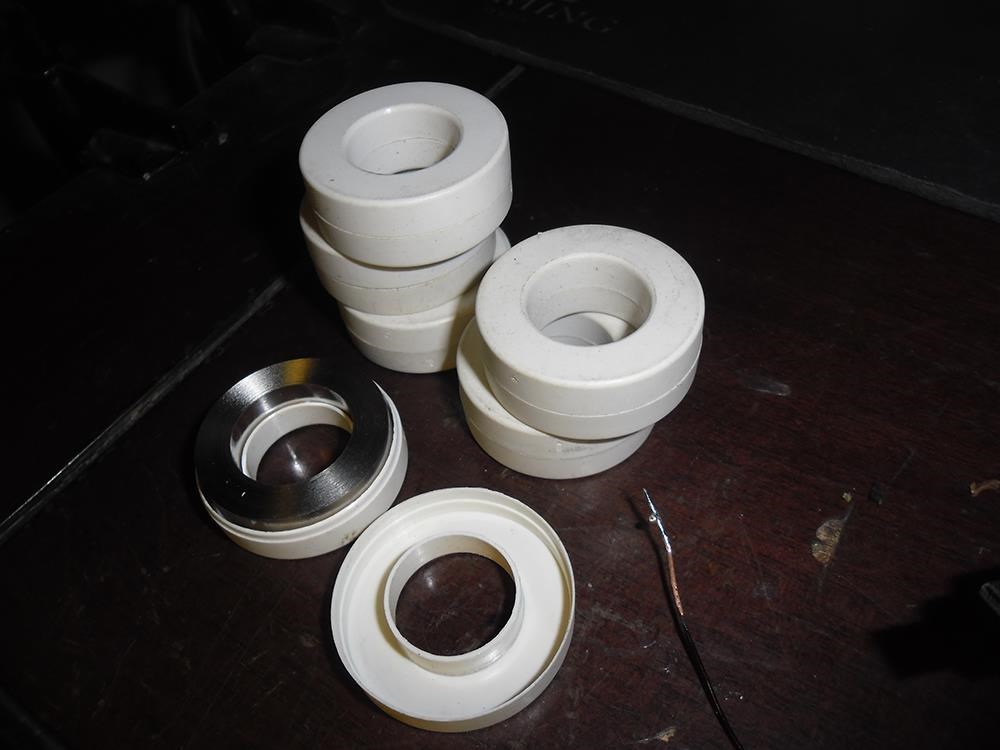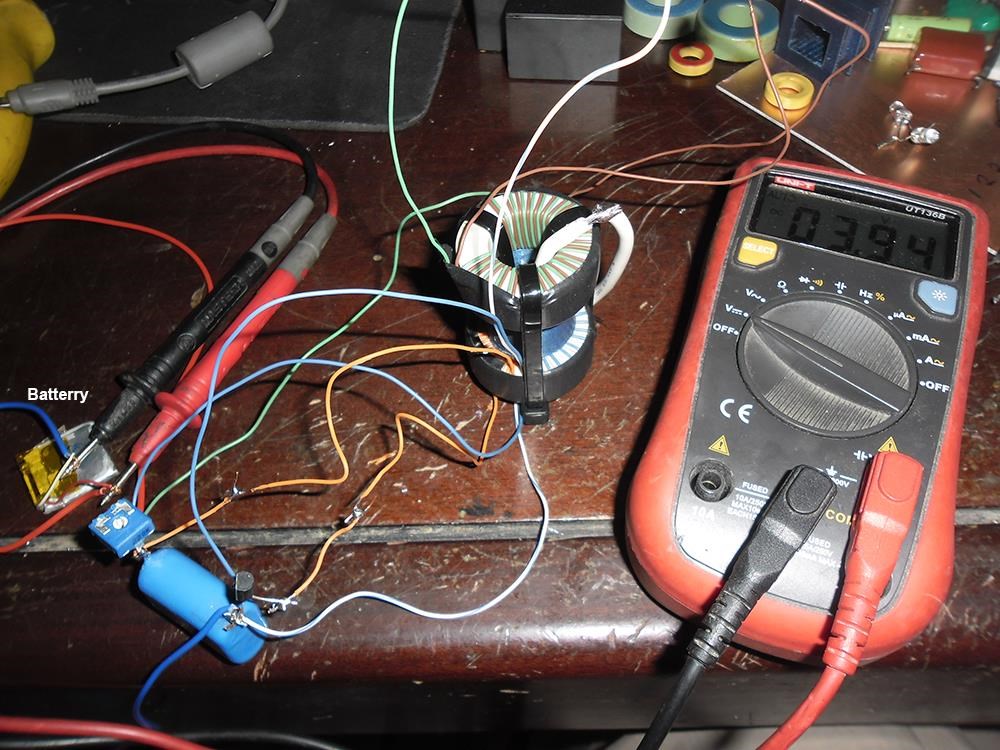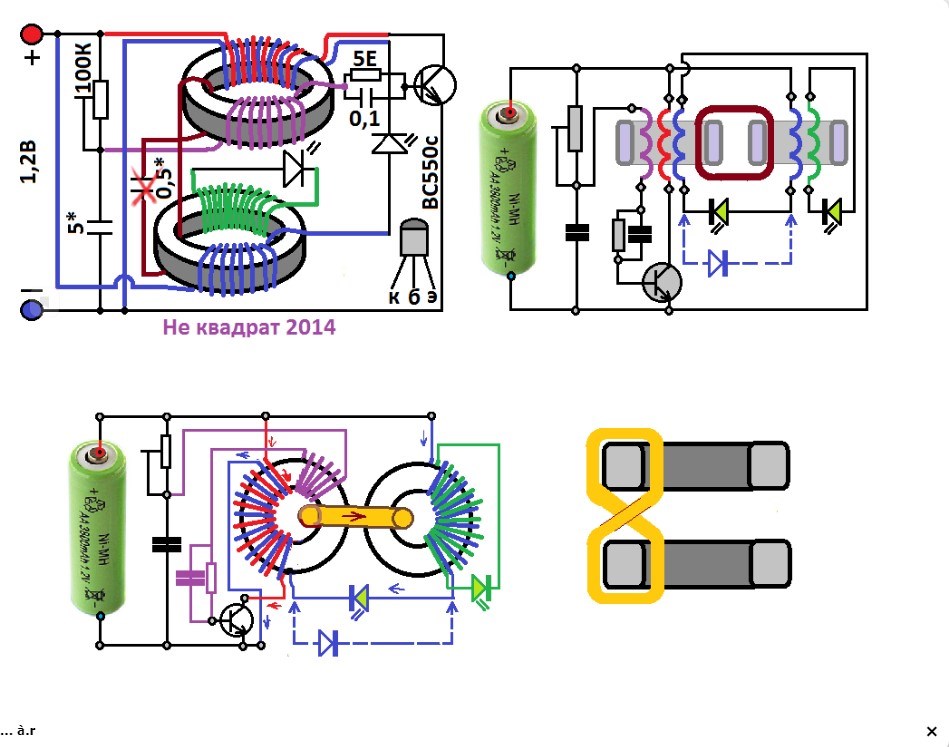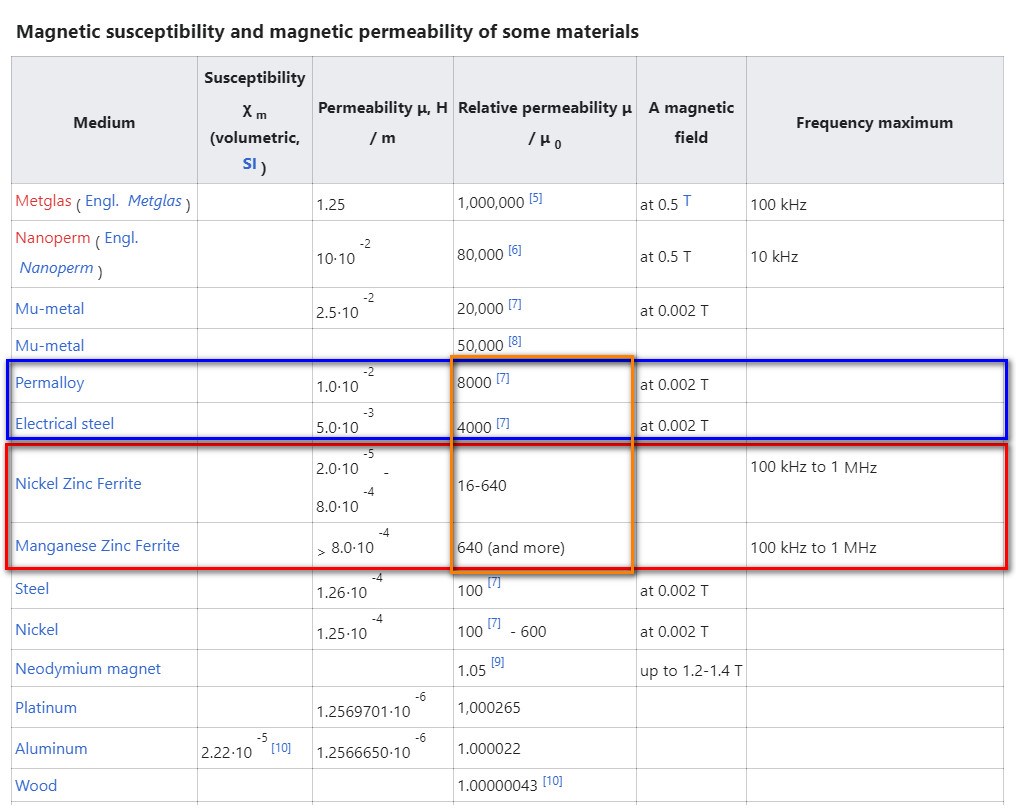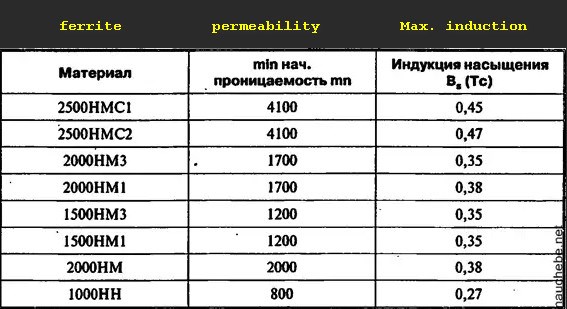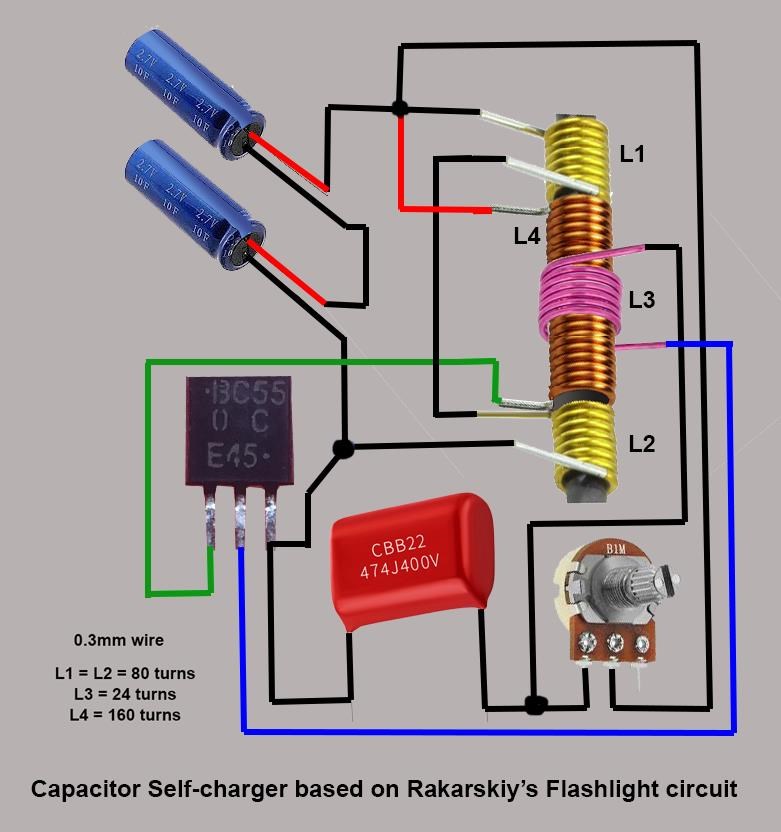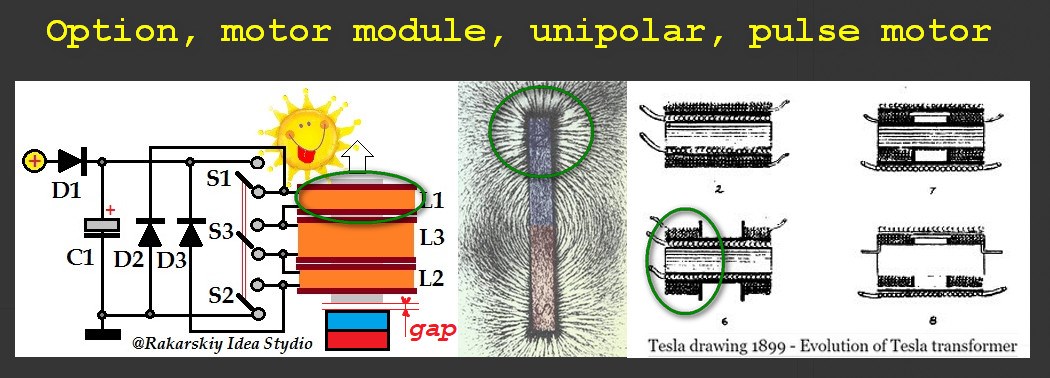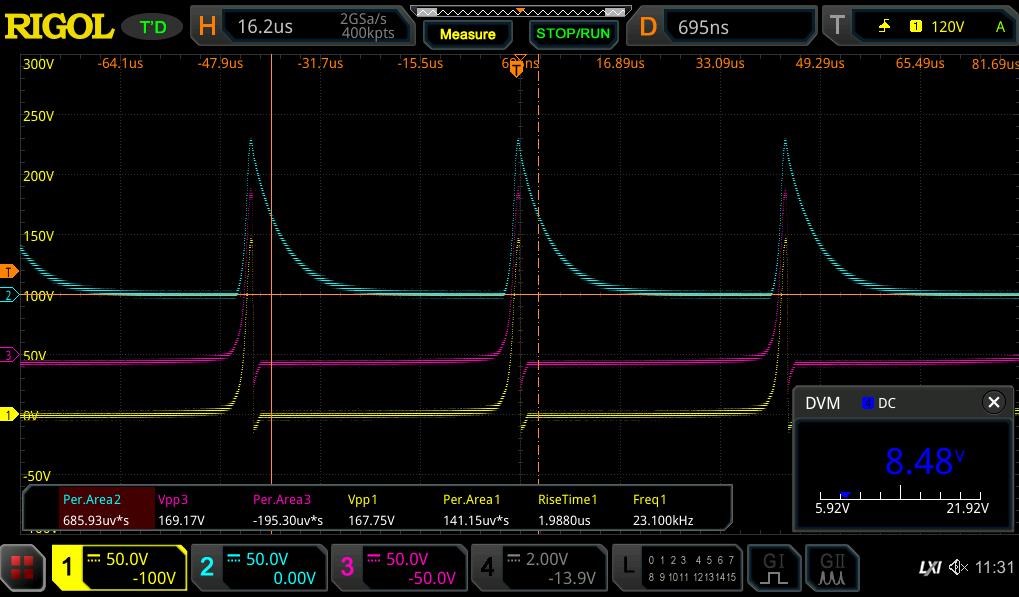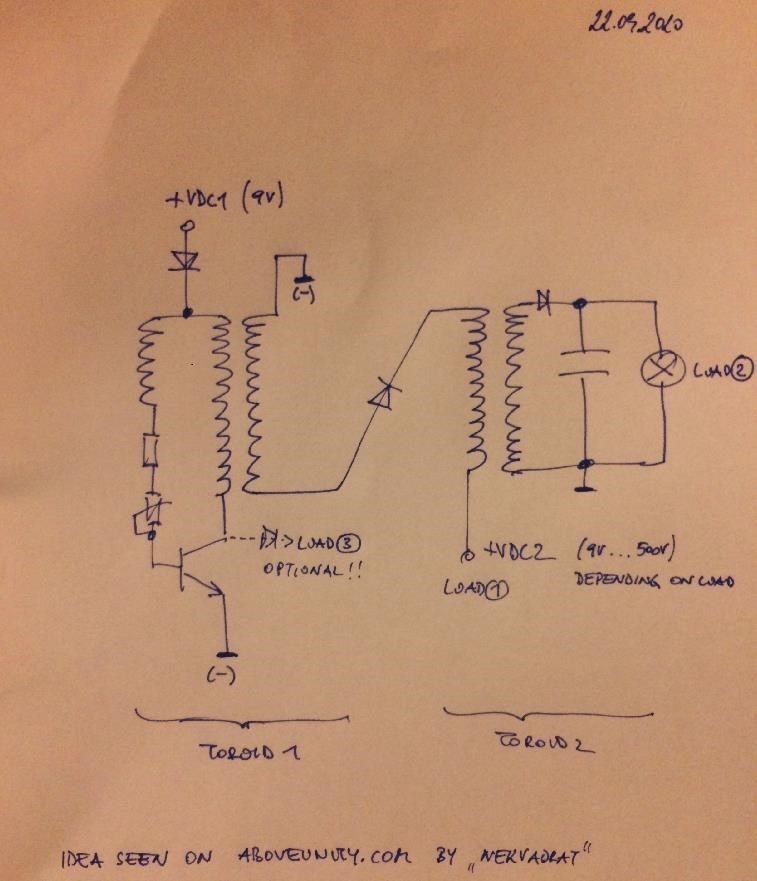Google failed. I used Bing and had to translate page then copy to text file. Was going to just add the text file but see no link to add file. So will just insert it here.
Good time readers, subscribers, and all those who just wandered into this page! Today we will talk about an interesting scheme,
repetition, which for a few days was just a record! And even in the open mode, which in itself is an event in the world of Free
Energy Seekers. The author of the scheme is a free energy seeker from Ukraine, known in many forums under the nickname"Not a square".
It's actually a diagram.
Схема рекуперационного фонарика Автор "Не квадрат", Украина
Scheme of Recovery Lantern Author "Not Square", Ukraine
... don't get me wrong, I've been looking for a long, long time. Today, of course, the experience of 2014, it is difficult to
remember, but the scheme is even a working layout, photos and oscillograms ...
This finder went further and increased the size and tension of the source. This replicator has two stable devices, with different
parameters of components. This means only one thing - the working principle of the scheme is already repeated.
A few more searcher posts under the name "Transistor"
For the fifth day the generator assembled as a night light is not squared. During the day the battery rose to 3.8 volts, and then
the controller akb centalized the charge by 3.8 volts, along with the load - 3 LEDs. It's a joy. The forums are full of stagnation
and no progress. You have to start somewhere. If you have something interesting, share it. Criticism to do it is more easy than to
take soldering iron in hand.
What did you say, "transistor"? I transfer in one day the recovery system (reverse impulse), charged the powering AKB from the mobile
phone, which is constructively built into the mini-controller level of charge. This node does not allow the voltage on the battery to
rise in the six 3.8 volts. For dummies and investigators I will explain: the voltage of the pulse of the charge is above the level
of 3.8B with a current component sufficient to charge the battery.
Another post given by the seeker
... Without it, the brightness of the glow depends on it. Guys how can you talk about the work of the scheme without collecting it
and not experiencing it? That would collect it and fix a couple of hours. The layout on armored cores works worse. The diode stands
according to the author's scheme ...
... Well, about the layouts, I do not have cool devices except the arrow and electronic tester can do it well. As a result, 10 days
I even got used to and relatives too that in the hall in the corridor and in the basement around the clock there is a light. And when
I ran them there and there were no three volts. What is interesting when adjusting the shift in the direction of the increase in
current increases the current of the transistor and the frequency of the generator as well as the charging current. I'm already
working on a new generator in the case of the factory lantern 5 LED as I finish. If all goes well in the future car akb with a
powerful generator of this type and already with powerful ladder lamps for lighting ...
... Basic and collector windings are not included as blocking.
It follows that without led Led1 the circuit will not start.
Moreover, the beginning of the transistor's opening with a base voltage instantly results in the triggering of the Led1 diode due
to two windings, which are additional supports for it. One of these windings has a constant time, given by the capacitor 0.5. So
the burning time of this LED is determined by this capacitor (in the first approximation). Without it , time is determined by the
fading of current in the turn of communication.
Once Led1 is extinguished, the transistor is shut down by the result of a locking voltage on the base winding of the transistor.
At this point, Led2 takes over the self-induction of the second ring, developed through the bond revolution and the capacitor 0.5.
The charge, which"settlement" at the transition of the collector-emitter at the expense of the OEDS of the first tr-ra, then goes
back to the source through the same collector winding.
The scheme differs from the usual blocking in that the closure of the transistor is not associated with saturation - neither the
transformer (it is saturated), nor the transistor. The closing process is managed by Led1 in the diagram described above.
Also, the current consumption from the source in the opening phase of the transistor here is much more than the usual blocking -
at the expense of Led1. ...
This is the opinion I have cited for the fact that the analysis of the scheme is different for everyone.
There are still repetitions of this scheme of Not Square.
The quote: "He is also very capricious to the choice of details. After all, 12 to 17 MHz is not a hoarse. By giving away the second
ICE you can raise the amplitude with your hand, and even more than with LED. It is better to put a high-frequency transistor. For
example, the same CT3102, but better higher power. I think it's fashionable to make a composite emitter repeater. In general, gene
class, seven feet under the keel! If two people already write that the accu is charging, then probably it is."
Цитата: "Он также очень капризен к выбору деталей. Все таки от 12 до 17 МГц это не хухры мухры. Отпаяв второй ЛЕД можно рукой
амплитуду повышать , да еще и больше, чем со светодиодом. Транзистор лучше поставить высокочастотный. Например тот же КТ3102,
но лучше повыше мощностью. Думаю модно делать составной по типу эмиттерный повторитель. В общем ген класс, семь футов под килем!
Если уже двое пишут, что акку заряжается, то наверное это так."
The quote: "He is also very capricious to the choice of details. After all, 12 to 17 MHz is not a hoarse. By giving away the second
ICE you can raise the amplitude with your hand, and even more than with LED. It is better to put a high-frequency transistor. For
example, the same CT3102, but better higher power. I think it's fashionable to make a composite emitter repeater. In general, gene
class, seven feet under the keel! If two people already write that the accu is charging, then probably it is."
Repetition of the third (nickname "AND")
Цитата: "На общей волне энтузиазма, тоже собрал схему Не квадрата. Действительно хватило 30 минут. Заработала с первого раза.
Транзистор кт3102АМ. Сколько будет работать, посмотрим. Не квадрат, спасибо!"
The quote: "On the general wave of enthusiasm, too, assembled a scheme not square. It really took 30 minutes. Earned the first time.
Transistor ct3102AM. How much will work, we'll see. Don't square, thank you!"
These materials from the website "STRANNIK-2"
My "vision" of the work scheme:
I have drawn "transformers" on the cores (cores) for ease of perception. In design we have: Block generator system (R1-C1-L4-VT1)
which is constructively placed at the core of the T1 transformer, together with windings: Bifilara (L1-L2/1) and 0.5 revolution (L5/1).
In fact, the work of a transistor is set on this core. The second core forms the Transformer Tr2 with windings of the second bifilar
(L3-L2/2) and 0.5 revolutions (L5/2). We have the connection of both cores through the L2 and L5 sections of which form a common
"inductive" connection. How can the scheme work.
When the battery is connected to the circuit, the elements of the circuit have current. The current flows in the L2 winding, through
both sections and led Led 1. If the voltage of the source is sufficient, it will light up if not enough, accordingly will not light up.
To the base of the transistor, through the winding L4, the same comes current. In the L5 winding, the current will only result from the
oncoming currents of L2 and L4 windings. there are still many nuances, perhaps, but for the first understanding is enough. The incoming
current to the base of the transistor opens it. And the current begins to flow through the L1 winding. since this winding has half as
much resistance as the two L2 windings consistently, the current will be larger in it, respectively the core will be remagnetized, and
through the winding L5, will give the impulse to magnetize to the second core. At the same time, the current in the L2 winding will not
change its direction, and the voltage in this thread will increase, which will cause the glow of the LED Led 1. At the same time, the
current in the L3 winding for its glow has the opposite direction (yes I'm not mistaken. And the main current in the L1 winding locks
the current in the control winding L4, which causes the transistor to shut down. (this is an element of the block generator work). At
the moment of switching off, we have a "bloated" magnetic field in both cores, and a promise to self-induction in the system.
Self-induction is if just the occurrence of EDS induction, with the"absorption of your own magnetic field coil"
Due to the phenomenon of self-induction in the electrical circuit with the source of EDS at the circuit is installed not instantly,
but after a while. Similar processes occur in the case of a chain-breaking,and(with a sharp blur) the magnitude of EDS self-induction
can at this point significantly exceed the EDS of the source.
We are interested in the processes precisely when the chain is blurred. But we should not forget that the current in the chain will
flow according to the rule of the Right Hand (in our case " for thesolenoid"). It should also be taken into account that the current
caused by the magnetic field will form in the thread in which conditions for it will be more favorable. This is a closed circuit and
resistance to the general circuit. There are a lot of controversial moments at first glance, but first we will try to understand. We
will deal with the rule of charge of the AKB.
The main charge is current and voltage. In order for the current to start moving towards the battery, the voltage of the "external
source" must exceed the battery voltage by N times. Also resistance elements should also be appropriate, naturally and the potential
of the field. If the voltage of EDS self-induction depends on the frequency, magnitude of magnetic induction and the length of the
conductor affected by this magnetic induction (and in our country it has a waning character), which we can roughly calculate according
to the formula:
EDS(Volts) )
As we see the power of current in our formula of definition of EDS is not! The current measure should be considered, according to
another formula - according to the law of Om for the full chain, with a little clarification.
I (A) - EDS - U bat. / R + Rn +r0
The current measure will depend on the difference in voltages between EDS self-induction and battery voltage, divided by the amount
of resistance to the recycling circuit. So, our charging current, this measure of EDS is not up to zero, but before the battery voltage.
To meet the sufficient condition, the guaranteed battery charge is suitable for us only a thread with the windings of L2 (L2/1 q L2/2).
It remains only to clarify whether the current flows through the LED, in the opposite direction? Let's turn to the omniscient network
with a request and find such material.
*The voltage of the LEDs is applied in the opposite direction.
The 25 volt voltage applied in reverse voltage will disable the crystal, with a voltage of 12 to 15 volts in the opposite direction
completely safe for the LED. The working voltage of the LEDs app in the opposite direction does not ignite and does not disable the
crystal.
As we can see, this is also not classified data. The current of self-induction into the battery in the non-square scheme comes exactly
by this way, and the LED in this switch register does not burn. At the same time, L2 windings, connected consistently, act as if
separate components absorbing each of its core field by increasing tension. In this switch register
It turns out that the work, short closed winding L5 through both cores remains unclear. At the moment of inclusion of the L1 winding
with the appropriate direction of the current, in the winding L5 there is a current of the opposite direction, which excites the
magnetic field of the second core. Probably this combination does not give the cores, do not achieve full saturation. During the
register of induction pulse induction, the direction of the current in the L5 winding will be the opposite direction of the current
of the L2 thread self-induction, which will have a beneficial effect on the process of utilization of the stored magnetic field energy
in both cores. For each battery voltage, you need to calculate the parameters of the device personally, but these are the details of the
design.
In my opinion. it is appropriate to supplement this scheme with two elements: VD1 Diode and Stabilizentron VD2. This is if the scheme
is done at great strain. Well and the led chain Led1 add a matching resistor, so that the reverse diode has dimed the LED with a
resistor.
Not a square smart, that's why he passed by and did not develop further do not know. The only thing left is a power option, which I
will consider with the participants of the "Source" project. This scheme can be assembled by anyone. who little-meaning with circuitry.
Soldering is not enough to hold, you also need to think.
